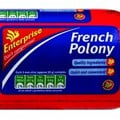
Subscribe & Follow
Jobs
- Public Relations Writer Midrand
- PR Account Manager Johannesburg
- Head of Content – What’s On, UAE & KSA Dubai
- PR and Digital Content Writer Sandton
- Group Account Director - Consumer PR and Influencer Cape Town
- Event Manager - PR Agency Johannesburg, Cape Town or DBN
Easy steps to effective crisis communication
In communications, this approach is a cardinal sin.
- Once a corporate calamity becomes present, it is vital to acknowledge the problem immediately and to act swiftly.
- Organisations must confide in their stakeholders by making them aware of the issues the company is facing and what levels of engagement the organisation is employing to rectify the disaster.
- Corporate lip service will not cut it. Consumers can see through the commercial spin and will hold the company accountable, as they rightfully should.
- When the company or brand does engage with its stakeholders, it must do so thoughtfully and compassionately. In the case of Enterprise, the Listeriosis epidemic has been responsible for the deaths of over 180 people and infected almost a thousand others since the outbreak. These “consumers” are a part of somebody’s family, a colleague and or are members of our community. Enterprise can expect indignant responses from those who have lost loved ones or suffered ill health as a result of their products.
- Granted, it was impossible for Enterprise to immediately have a database of everyone impacted by the illness. But they could have entrusted the media with their side of the story.
- Answering the media’s questions openly and honestly, would not only have provided consumers with clarity but help maintain trust in the embattled brand.
- Provide solutions. Enterprise should have provided guidelines in terms of which products were implicated and the types of symptoms to be aware of. They should have informed those experiencing symptoms where to seek medical help. These steps although requiring minor effort to execute could have softened the blow for Enterprise.
- Corporates must always plan the next communication steps in order of priority and keep communication lines open. Brands cannot over communicate in times of crises, provided the information has been verified and is accurate.
- Partnerships are critical. The Enterprise disaster could have been minimised had the company partnered up with the government. Government would have made their medical networks aware of the outbreak and through this partnership, Enterprise could potentially have saved the lives of many. Through the media, consumers could have been informed to seek help from their local clinics, at no cost to them.
- Communicate openly and honestly, even if the news is bad. Gaining consumer trust again will be easy if they believed your story the first time around.
Financial losses and brand erosion
Due to the affordability of certain Enterprise products, polony is almost a staple food for many poor South Africans. Will the brand suffer financial losses? Undoubtedly. As things stand, Tiger Brands, the holding company of Enterprise Foods, has projected a loss of over R800m. It is also facing two class action lawsuits amounting to R425m related to the Listeriosis outbreak.
The more discerning consumer will not easily forget what happened and how the situation was managed. Enterprise is facing brand erosion over the Listeriosis outbreak, but the lower income consumer will continue to support the brand because it provides an affordable source of protein, and there are very limited alternatives that can beat the price of polony.
Large corporations cannot only implement a reputational management strategy in times of crises. When dealing with disasters, both present or impending, it is always better to employ proactive thinking over reactive reasoning.
Pre-disaster public relations opportunities
Corporations should always have the necessary media relationships in place long before the onset of a disaster. Stakeholders should know what the company stands for before any calamity. They should know who and what drives the organisation’s behaviour. What is considered important to them, how they link in with their consumers, what their charitable programmes are. How staff are treated, and what value investors are getting.
The list of pre-disaster public relations opportunities are endless, and it is unfortunate, that many corporate companies do not have these in place because public relations is often considered as a “nice to have” business function. But sadly, organisations often realise after a crisis what a positive impact PR can make on the organisation’s bottom line. Not having this strategic business function in place will always leave the company grappling to clean up its brand image.
Reputations are built on trust, which can be lost due to a variety of reasons. Boards of companies often forget the human element behind the sales drive: the consumer who makes a purchasing decision based on trust, pride, admiration, feel-good factors, and responsible corporate citizenry. Price is not always the only determining factor. It is impossible to say how long it will take the consumer to trust a brand such as Enterprise again, but it can happen with a strategic PR plan in place.
This plan focuses on direct, honest and authentic communication with the consumer as well as all other stakeholders that were impacted by the disaster. Enterprise needs to give people a reason to believe in their brand and to trust them again. This can only happen if Enterprise is transparent and claims responsibility for its involvement in all those tragic deaths.






















